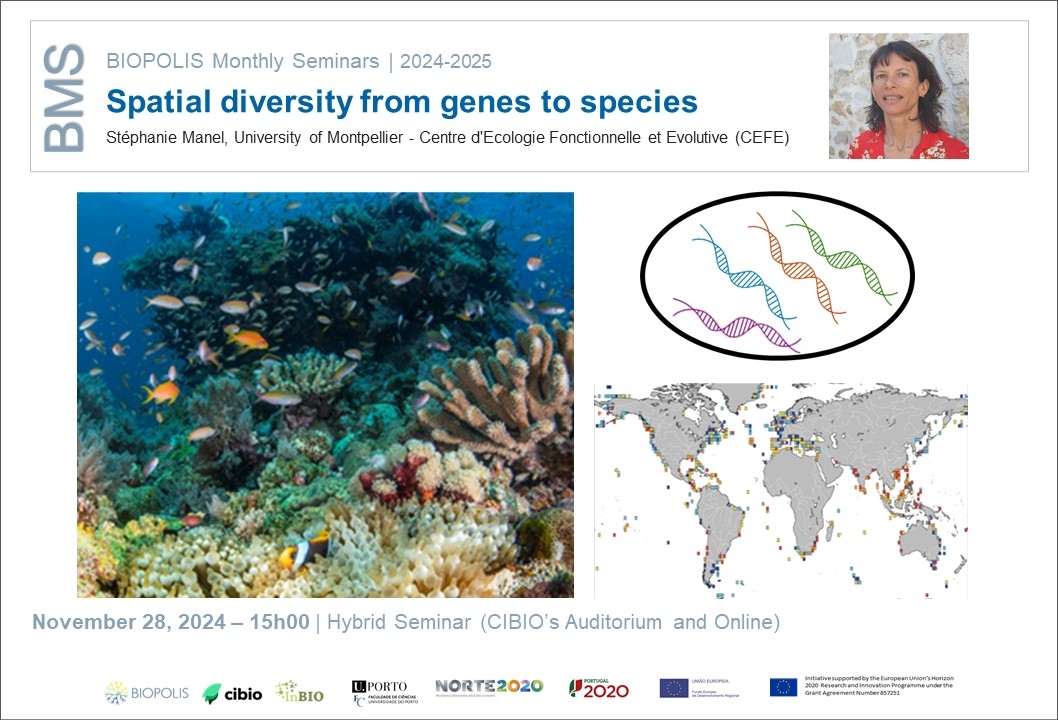Spatial diversity from genes to species
28 Nov 2024 - Stéphanie Manel, University of Montpellier - Centre d'Ecologie Fonctionnelle et Evolutive (CEFE) | 15h00 | Hybrid Seminar

Biological diversity is distributed in the space at various taxonomic levels: from genes to ecosystems. Describing and understanding the spatial distribution of biological diversity and the processes that underlie it is central in population genetics and community ecology. It can reveal important insights into evolutionary processes, population and species history, and, ecological factors that shape variations. Understanding these patterns is also key to preserving biodiversity and guiding conservation efforts. Theory predicts that similar evolutionary processes (drift, dispersal, selection) acting along a micro (genes) - macro (species) continuum drive the both levels of diversity. If micro- and macro-evolutionary scales are governed by analogous evolutionary processes, then spatial patterns of intra- and interspecific diversity should covary. I will illustrate from marine fish how spatial congruence between genetic diversity within species and specific diversity within communities appears to be context-dependent.
Stéphanie Manel is Professor in Conservation Biology at the Center of Functional Ecology and Evolution in Montpellier (CEFE, France). She leads the team Biogeography and Ecology of Vertebrates. In 2003, Stéphanie Manel introduced the field of landscape genetics, a discipline at the interface of ecology and population genetics, which aims to understand the impact of the environment on micro-evolutionary processes such as gene flow and local adaptation. Her main contribution to the field is a better understanding of the spatial patterns and processes of genetic variation. This feeds into an empirical evolutionary biology addressing environmental challenges including biodiversity conservation, population connectivity in fragmented landscape and adaptation to climate change.
[Host: Rita Rocha, Ecogenomics - ECOGEN]

